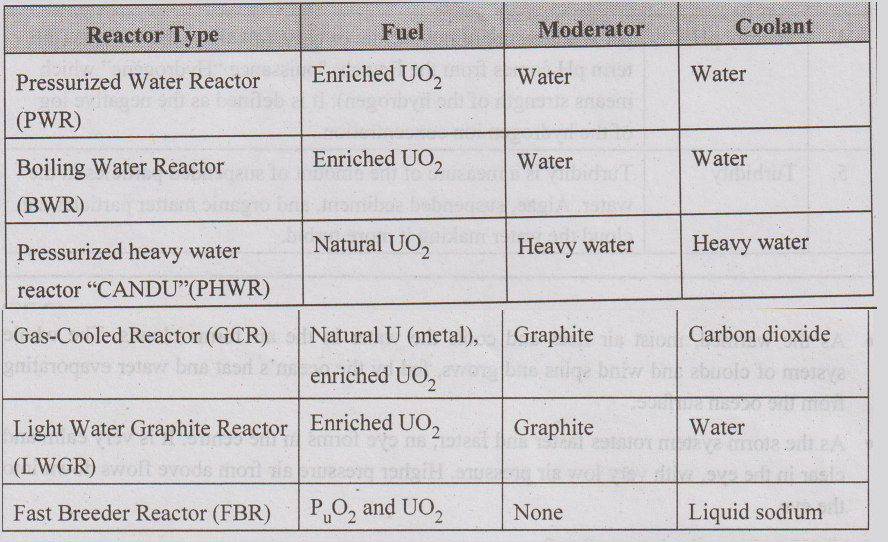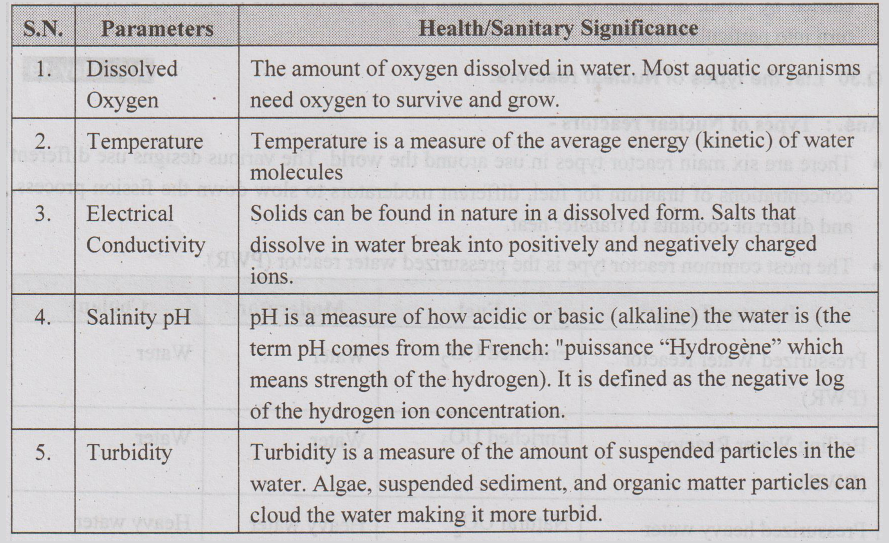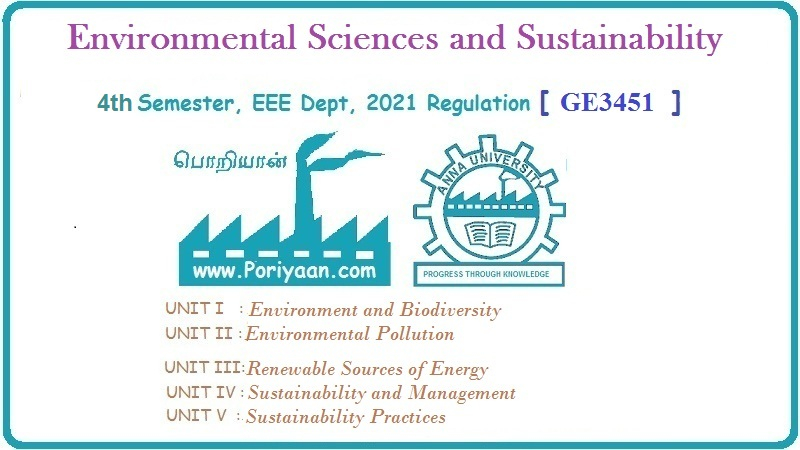Environmental Sciences and Sustainability: Unit II: Environmental Pollution
Two Marks Questions with Answers
Environmental Sciences and Sustainability | Environmental Pollution
Environment and Sustainability: Unit II: Environmental Pollution : Two Marks Questions with Answers
Two Marks Questions with Answers
Q.1
Define air pollution. What are various sources of air pollution ?
Ans.:
Air Pollution :
•
Air pollution is defined as the undesirable contamination of gas, smoke, dust,
fume, mist, odour or chemical particulates in the atmosphere which are
injurious to human beings, plants and animals.
Sources
of air pollution
1.
Industrialization
2.
Urbanization
3.
Vehicles emission
4.
Population growth
•
Industry, in its broadest sense is a major contributor to air pollution. The
exhaust from industry may contains various poisonous gases, hazardous effluents
and noise also.
•
Urbanization is another major cause of air pollution. Waste of construction
material also contributes to it. Various electrical and electronic gadgets used
for human comfort are also making air pollution.
•
Number of vehicles increasing day by day which emits various dangerous gases
such as CO, CO2, Pb, SO2, and unburnt hydrocarbons.
•
Population growth also causes air pollution as the garbage is generated by each
human being. Food consumption also increases with population.
Q.2
Define ozone layer depletion. State impact of Ozone layer depletion.
Ans.:
Ozone Layer Depletion :
•
Ozone (O3) is a gas found in atmosphere. Ozone is highly
concentrated in stratosphere which lies about 15-50 km above the earth's surface.
This is known as ozone layer.
•
The ozone in stratosphere protects living organisms from the ultraviolet
radiation of the sun. In particular, it absorbs ultraviolet (UV) radiations and
screens out harmful UV radiations.
Impact
of ozone layer depletion
1.
Effects on human health
•
UV rays damage genetic material in skin causing skin cancer.
•
Prolonged exposure to UV rays may cause blindness.
•
Human resistivity is reduced resulting in allergies and infections.
2.
Effects on aquatic system
•
Kills lower fauna and flora
•
Affects photosynthesis process cause mutation.
3.
Effect on materials
•
Degradation of point quality and plastics.
4.
Effects on climate
•
Climate change.
•
Global warming.
Q.3
What is mean by chemical Hazards ?
Ans.:
Chemical hazards :
•
Chemical hazards can be both natural and human-made chemicals in the
environment.
•
Human-made chemical hazards include many of the synthetic chemicals we produce,
like disinfectants, pesticides and plastics.
•
Some chemical hazards occur naturally in the environment, like the heavy metals
lead and mercury. Some organisms even produce natural chemicals that are an
environmental hazard, such as the compounds in peanuts and dairy that cause
allergic reactions in humans.
Q.4
Name any four air pollutants, their sources and effects.
Ans.:
Air
pollutant, their sources and effects :

Q.5
What is the role of individual in pollution prevention ?
Ans.:
Pollution prevention :
•
Pollution prevention is not a job of any specific person but all individuals
must contribute in preventing pollution.
•
Every individual should think about reducing pollution and act accordingly.
1.
Importance of plantation of trees.
2.
Reduce use of wood, paper etc. that comes from forests.
3.
Reuse various useful materials.
4.
Avoid use of non-degradable items e.g. plastic bags.
5.
Conserve water. Implement rain water harvesting.
Q.6
Define acid rain. List any four impacts of acid rain.
Ans.:
Acid rain :
•
The term "acid rain" means acidification of the ecosystem by natural
boiler which evaporates water from the sea, lakes and rivers and sends it down
in the form of rain.
•
Normally rain water is always slightly acidic because of the fact that CO2,
present in the atmosphere gets dissolved on it. Because of the presence the of
SO2 and NO2, gases as pollutants in the atmosphere, the
pH of the rain water is further lowered. This type precipitation of water
called acid rain or acid deposition.
Impacts
of acid rain :
1.
Both dry and wet deposition of sulphur dioxide significantly increases the rate
of corrosion of lime stone, sand and marble.
2.
Forest tree population is affected by acid rain.
3.
Acid rain in combination with ozone may damage the coating on leaves and
needles. This may weaken or damage them and provide opportunities for disease
to enter the tree.
4.
Acid rain may change the characteristics of soil and eventually pollute the
streams and lakes.
Q.7
Define water pollution and give the sources of water pollution.
Ans.
: Water Pollution :
•
Water pollution can- be defined as alteration in physical, chemical or
biological characteristics of water making it unsuitable for designated use in
its natural state.
•
There are two sources of water pollution. They are :
1.
Point sources - Specific sites near water which directly
discharge effluents into them.
2.
Non-point sources - Sources are scattered and individually
collect pollute water.
Q.8
What do you mean by DO and BOD?
Ans.
: Dissolved Oxygen : Dissolved Oxygen (DO) is the amount of
O2 dissolved in a given quantity of water at a particular
temperature and atmospheric pressure.
Biological
Oxygen Demand (BOD) : Biological Oxygen Demand (BOD) is
defined as the amount of DO required to aerobically decompose biodegradable
organic matter over a period of 5 days at 20 °C.
Q.9
Name some of the acts enacted by the Indian Government to protect the
environment.
Ans.:
1.
The Water (Prevention and Control of Pollution) Act 1974
2.
The Water (Prevention and Control of Pollution) Cases Act 1977
3.
The Air (Prevention and Control of Pollution) Act 1981
4.
The Environment (Protection) Act 1986
5.
The Public Liability Insurance Act 1991
Q.10
What are the common objectives of Environmental Legislation?
Ans.:
Objectives of Environmental Legislation
1.
To control further damage to the environment and ecosystem
2.
To conserve the environment.
3.
To restore the environment in areas damaged including such measures as
reclamation of degraded land.
4.
To create authorities to administer the policy and contents of the legislation.
5.
To provide penalties and prosecution for violation of laws.
Q.11
What are the objectives of water act ?
Ans.:
Objectives of water act:
1.
Prevention and control of water pollution.
2.
Maintain water quality.
3.
Establishing pollution control boards.
Q.12
List out the advantages of rain water harvesting.
Ans.:
Advantages of RWH
1.
Rain water harvesting increases ground water table.
2.
Recharging of ground water table improves water quality.
3.
It increases water availability to individual.
4.
Minimizes local flooding and droughts.
5.
Rain water harvesting helps eliminating desertification.
Q.13
Define noise pollution.
Ans.:
Noise pollution
•
Noise pollution is defined as - unwanted, unpleasant sound that causes
discomfort of human beings. Noise or sound is measured in decibal (dB).
•
Sound becomes unwanted when it either interferes with normal activities such as
sleeping, conversation or disrupts or diminishes one’s quality of life. Not all
noise can be called noise pollution. If it does not happen regularly, it may be
termed as 'Nuisance'
•
Noise is a physical form of pollution and is not directly harmful to the life
supporting systems namely air, soil and water. Its effects are more directly on
the receiver i.e. man.
•
Noise pollution is the result of modern industrialized urban life and
congestion due to over population.
Q.14
Define pollution.
Ans.
:
The excess discharge of any substance into the environment which affects
adversely environment quality.
Q.15
Define acid rain.
Ans.
:
Formation of sulphuric acid due to atmospheric pollutants with oxygen, water or
moisture is called as acid rain.
Q.16
What is disaster management ?
Ans.
:
The management of natural calamities (earthquake, cyclones, land slides, flood)
in efficient way to save lives and materials is called disaster management.
Q.17
Explain the term composting.
Ans.
:
Composting is a process of converting the organic waste material into
fertilizer by anaerobic bacterial activity.
Q.18
What is zero discharge ? Why is zero discharge not practical in most instances
?
AU
: May-14
Ans.
: Zero discharge :
•
When there is no measurable emissions from the defined source it is called as
zero discharge.
•
Zero discharge is a hypothetical condition.
Q.19
What are the major causes of earth quake ?
Ans.:
Causes of earth-quake :
1.
Volcanic erruptions causes disequilibrium.
2.
Tectonic activity associated with plate marging.
3.
Seismic wares
4.
Suddun movement of rock strata.
Q.20
What do you mean by noise pollution ?
Or
Define noise pollution.
Ans.
: Any
unwanted, unpleasent sound that causes discomfort of human being is called as
noise pollution.
Q.21
What is the role of individual in pollution prevention.
Ans.
•
Pollution prevention is not a job of any specific person but all individuals
must contribute in preventing pollution.
•
Every individual should think about reducing pollution and act accordingly.
1.
Importance of plantation of trees.
2.
Reduce use of wood, paper etc. that comes from forests.
3.
Reuse various useful materials.
4.
Avoid use of non-degradable items e.g. plastic bags.
5.
Conserve water. Implement rain water harvesting.
Q.22
Give two examples of physical hazard.
Ans.
:
A physical hazard is defined as "A factor within the environment that can
harm the body without necessarily touching it. Vibration and noise are examples
of physical hazards".
Examples
of Physical hazards include but aren't limited to electricity, radiation,
pressure. noise, heights and vibration amongst many others.
Q.23
What is PAN ? Give detrimental effects.
Ans.
:
The common components of photochemical smog are ozone, nitric oxide, acrolein,
formaldehyde and peroxyacetyl nitrate (PAN).
•
Photochemical smog causes serious health problems. Both .ozone and PAN act as
powerful eye irritants. Ozone and nitric oxide irritate the nose and throat and
their high concentration causes headache, chest pain, dryness of the throat,
cough and difficulty in breathing.
•
Photochemical smog leads to cracking of rubber and extensive damage to plant
life. It also causes corrosion of metals, stones, building materials, rubber
and painted surfaces.
Q.24
Write any two chemical hazards present in the environment.
Ans.:
Chemical hazards can be both natural and human-made chemicals in the
environment.
•
Human-made chemical hazards include many of the synthetic chemicals we produce,
like disinfectants, pesticides and plastics.
•
Some chemical hazards occur naturally in the environment, like the heavy metals
lead and mercury. Some organisms even produce natural chemicals that are an
environmental hazard, such as the compounds in peanuts and dairy that cause
allergic reactions in humans.
Q.25
Write any four principles of green chemistry.
Ans.:
Principles of green chemistry :
1.
Prevention
2.
Atom economy
3.
Less hazardous chemical syntheses
4.
Designing safer chemicals
5.
Safer solvents and anxiliaries
6.
Design of energy efficiency
Q.26
What are the characteristics of PAN ?
Ans.:
1.
Peroxyacetyl nitrate is a peroxyacyl nitrate (PAN). It is a secondary pollutant
present in photochemical smog.
2.
PAN is thermally unstable and decomposes into peroxyethanoyl radicals and
nitrogen dioxide gas. It is a lachrymatory substance.
3.
Peroxyacetyl nitrate (PAN) is an oxidant that is more stable than ozone.
Q.27
Mention the effects of nuclear wastes in humans.
Ans.
:
Nuclear waste : is generally a variety of solids, liquids, and gases
which are produced during the generation of nuclear energy during fission,
mining of uranium, do nuclear research and weapons production. They are
normally classified as low-level, medium-level or high- level wastes, according
to the amount and types of radioactivity in them.
1.
The losing of hair quickly and in clumps occurs with radiation exposure at 200
rems or higher.
2.
Brain : Since brain cells do not reproduce, they won’t be
damaged directly unless the exposure is 5,000 rems or greater. Like the heart,
radiation kills nerve cells and small blood vessels, and can cause seizures and
immediate death.
3.
Blood System : When a person is exposed to around 100
rems, the blood’s lymphocyte cell count will be reduced, leaving the victim
more susceptible to infection. Early symptoms of radiation sickness mimic those
of flu and may go unnoticed unless a blood count is done.
4.
Heart : Intense exposure to radioactive material at 1,000
to#5,000 rems would do immediate damage to small , blood vessels and probably
cause heart failure and death directly.
5.
Gastrointestinal Tract : Radiation damage to the intestinal
tract lining will cause nausea, bloody vomiting and diarrhoea.
Q.28
How cyclone is formed ?
Ans.
:
Tropical cyclones form only over warm ocean waters near the equator.
•
To form a cyclone, warm, moist air over the ocean rises upward from near the
surface. As this air moves up and away from the ocean surface, it leaves is
less air near the surface. So basically as the warm air rises, it causes an
area of lower air pressure below.
•
Air from surrounding areas with higher air pressure pushes in to the low
pressure area. Then this new cool air becomes warm and moist and rises, too.
And the cycle continues.
•
As the warmed, moist air rises and cools the water in the air forms clouds. The
whole system of clouds and wind spins and grows, fed by the ocean’s heat and
water evaporating from the ocean surface.
•
As the storm system rotates faster and faster, an eye forms in the centre. It
is very calm and clear in the eye, with very low air pressure. Higher pressure
air from above flows down into the eye.
Q.29
What is particulate matter ?
Ans.:
Particulate matter
•
Particulate matter (PM) is the sum of all solid and liquid particles suspended
in air many of which are hazardous. This complex mixture includes both organic
and inorganic particles, such as dust, pollen, soot, smoke, and liquid
droplets. These particles vary greatly in size, composition, and origin.
•
Particle pollution is made up of a number of components, including acids (such
as nitrates and sulfates), organic chemicals, metals, and soil or dust
particles.
•
Particles in air are either directly emitted, for instance when fuel is burnt
and when dust is carried by wind, or indirectly formed, when gaseous pollutants
previously emitted to air turn into particulate matter.
Q.30
List the types of Nuclear reactors.
Ans.:
Types of Nuclear reactors
•
There are six main reactor types in use around the world. The various designs
use different concentrations of uranium for fuel, different moderators to slow
down the fission process, and different coolants to transfer heat.
•
The most common reactor type is the pressurized water reactor (PWR).

Q.31
List some ways to protect soil.
Ans.
: Ways to protect soil -
1.
Soil erosion must be prevented or controlled by proper tree plantation.
2.
All the wastes from industry, domestic, must be dumped with proper trea
3.
Use of synthetic fertilizers must be avoided instead natural fertilizers mu;
4.
Educate people regarding consequences of soil pollution and to prevent s
Q.32
List any four water quality parameters and their importance.
Ans.:
Water quality parameters :

Environmental Sciences and Sustainability: Unit II: Environmental Pollution : Tag: : Environmental Sciences and Sustainability | Environmental Pollution - Two Marks Questions with Answers
Related Topics
Related Subjects
Environmental Sciences and Sustainability
GE3451 ESS 4th Semester | 2021 Regulation | 4th Semester EEE Dept 2021 Regulation
